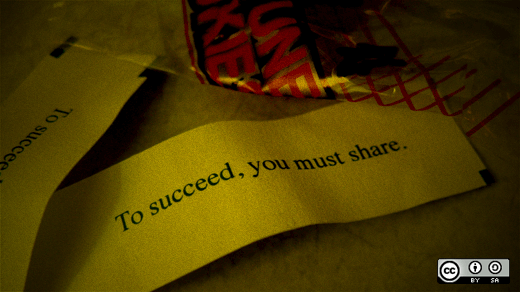The last time you ate Chinese food, you probably weren't thinking about open source development. But according to Jennifer 8. Lee, author of “The Fortune Cookie Chronicles,” the food on your plate arrived there in precisely that way.
General Tso's chicken? Unrecognizable to its creator, let alone the General's relatives. Swap out the butter and vanilla for sesame and miso in that most famous of Chinese desserts, the fortune cookie, and you have something that closely resembles tsujiura senbei, a Japanese fortune cracker. Americans will be sad to learn that much of the rest of the world—including China—is rather unfamiliar with this delicacy.
So if the fortune cookie comes from Japan, and most of American-Chinese restaurant food is foreign to the Chinese, where did these items come from and who put them on the menu of your local Chinese restaurant?
“I've eaten in Chinese restaurants on six continents, in 23 countries and 42 states,” Lee said. “Basically, Chinese food is very adaptive to the natural palate of a country. In Mexico, Chinese food looks an awful lot like fajitas. There's lime. Jalapeños. And instead of those crunchy noodles that come with duck sauce in the United States? Deep fried tortilla chips.”
French-Chinese food includes salt-and-pepper frog legs and squid. German-Chinese restaurants bread and fry just about everything. And in Jamaica, a favorite Chinese dish is jerk chicken fried rice.
Knowledge sharing and innovation
General Tso's Chicken emerged in New York City in the 1970s, then spread rapidly across the nation. Lee credits its popularity to its unique alignment with the national palate: “It was fried. It was sweet. And it was chicken. Three things that Americans love.”
But as it moved rapidly west, south, and north of New York City, General Tso's Chicken began to acquire regional differences and innovations by individual chefs. In the midwest, it's very sweet. “It's almost Chicken McNuggets in sauce,” Lee said. “You don't really know where the dough ends and the chicken begins.” Step into one restaurant, and it's red and crunchy. Go across the street and it's yellow and chewy. Maybe sesame seeds or some broccoli.
Much of this variation develops because most chefs apprentice in one Chinese restaurant and then work “for hire” in any number of others. In Chinatown, there are job listings for restaurant positions up and down the East coast, anywhere east (and often west) of the Mississippi. A chef might work 6 – 10 months in one restaurant before moving to a new restaurant down the street or across the country. There he will learn new ways of preparing familiar dishes and will influence the menu of that restaurant at the same time.
Unity amidst diversity
There are over 40,000 Chinese restaurants in the United States—more than McDonald's, Wendy's, Burger King, and Kentucky Fried Chicken combined. And yet in the midst of this mobile, creative industry, so much is strikingly similar. In any given American-Chinese restaurant, you are likely to find a red and white paper Zodiac menu, similar chairs and decor, even the same dishes and chopsticks.
Some of this homogeneity comes from shared suppliers and contractors. “There are now people, often Chinese entrepreneurs, who specialize in constructing Chinese restaurants,” Lee said. “The designs of the seats and dishes often come from the same warehouses and manufacturer's catalogs.”
In fact, most Chinese restaurant menus come from a handful of stores in Chinatown and are shipped to far-off states like North Carolina and Michigan. Lee has observed a core of “sort of real” Chinese dishes found on these menus, and there are certain templates that are common.
“I met the son of a menu printer, Eugene Lee, and he said when he was young, restaurant owners would come into the print shop with a competitor's menu, cut-up and reordered,” Lee said. Some would add new dishes, which then were often incorporated into the menus of other restaurants. The typical Chinese restaurant menu now contains over 100 selections.
Turf and money wars
Like any real open source movement, Chinese cuisine has seen intellectual property battles. Lee's book highlights one instance, reported in the New York Times in 1904:
“The reason was that Lem Sem, recently of San Francisco, had shaken the dust of the Golden Gate from his garments and had come here armed with many legal documents which purported to show that he was the original inventor and sole proprietor of the dish known as chop suey.”
The legal threats never amounted to much. Today's intellectual property claims over recipes meet the same fate; U.S. copyright law does not protect “mere listings of ingredients as in recipes, formulas, compounds, or prescriptions.” The actual words of a recipe's instructions may qualify as protected intellectual property (i.e. “substantial literary expression in the form of an explanation or directions”), but that does little for the chef with the great dish.
Still, as in the world of fashion, this breeds considerable innovation among restaurants. “In general, it's good to see those ideas spread and percolate and mingle,” said Lee. “I think it's good for ideas to inspire others.”
It's certainly hard to deny the value of a development model that's produced innovations like the Philly Cheesesteak egg roll and pastrami fried rice.
Special thanks to Jennifer 8. Lee and her book, The Fortune Cookie Chronicles, for the details in this story.






Comments are closed.